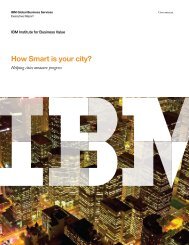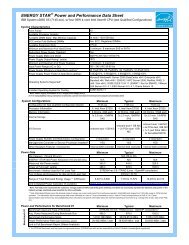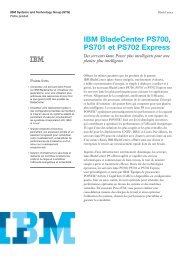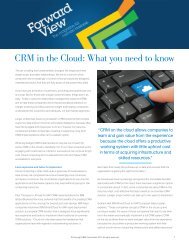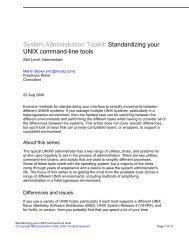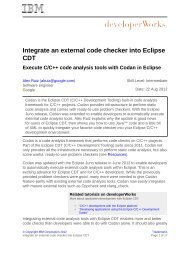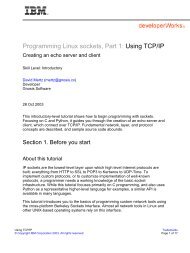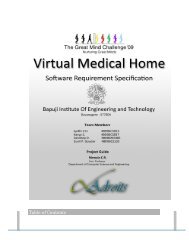Safety-related software development using a model-based ... - IBM
Safety-related software development using a model-based ... - IBM
Safety-related software development using a model-based ... - IBM
Create successful ePaper yourself
Turn your PDF publications into a flip-book with our unique Google optimized e-Paper software.
ibm.com/developerWorks/ developerWorks®<br />
automates many of the testing activities, including creation of test architectures<br />
and execution of test cases. Therefore, testers can focus on the correctness and<br />
completeness of their test cases rather than spending time on tedious and errorprone<br />
tasks, such as creating test harnesses. Model-<strong>based</strong> test architectures and<br />
test cases are easier to maintain than traditional test scripting languages, because of<br />
their graphical nature and explicit documentation.<br />
Overview of the Reference workflow with <strong>model</strong>-<strong>based</strong><br />
testing<br />
The Rational Rhapsody Reference Workflow (see Resources) describes an approach<br />
for <strong>model</strong>-<strong>based</strong> <strong>development</strong>, including automatic code generation and <strong>model</strong>-<strong>based</strong><br />
testing for safety-<strong>related</strong> <strong>software</strong> <strong>development</strong>. Figure 1 shows the major activities in<br />
this reference workflow. The upper part of the workflow describes activities to design<br />
and implement the safety-<strong>related</strong> <strong>software</strong>. The lower part of the workflow describes<br />
activities to verify the <strong>software</strong>.<br />
The approach addresses design and implementation together with appropriate test<br />
and verification. Textual requirements guide the <strong>development</strong> of a formal UML/SysML<br />
<strong>model</strong>, which is then is translated to code by <strong>using</strong> code generation. Both refinement<br />
steps are accompanied with appropriate guidelines and checks.<br />
The refinement step from textual requirements to a design <strong>model</strong> ready for code<br />
generation is verified by performing systematic requirements-<strong>based</strong> testing on the<br />
<strong>model</strong> level by leveraging <strong>model</strong> simulation, <strong>using</strong> <strong>IBM</strong> Rational Rhapsody animation.<br />
This is also called Model-in-the-Loop (MiL) testing. The generated code can be<br />
verified on a host computer by executing the same set of test cases used during MiL,<br />
but without including Rational Rhapsody animation. This is also called Software-inthe-Loop<br />
(SiL) testing. An automated equivalence check of the test results (backto-back<br />
testing) between MiL and SiL is performed to verify the results. This can<br />
be complemented by executing the set of tests on the target processor, also called<br />
Processor-in-the-Loop (PiL) testing. Test execution on <strong>model</strong> and code provides<br />
structural coverage measurement to assess the completeness of the tests and<br />
avoid including unintended functionality. Requirements coverage is measured during<br />
execution of the test cases.<br />
<strong>Safety</strong>-<strong>related</strong> <strong>software</strong> <strong>development</strong> <strong>using</strong> a <strong>model</strong><strong>based</strong><br />
testing workflow<br />
Page 3 of 13



